How to Factory Reset Your Router in 4 Steps
A factory reset is the last resort for fixing serious Wi-Fi router issues.
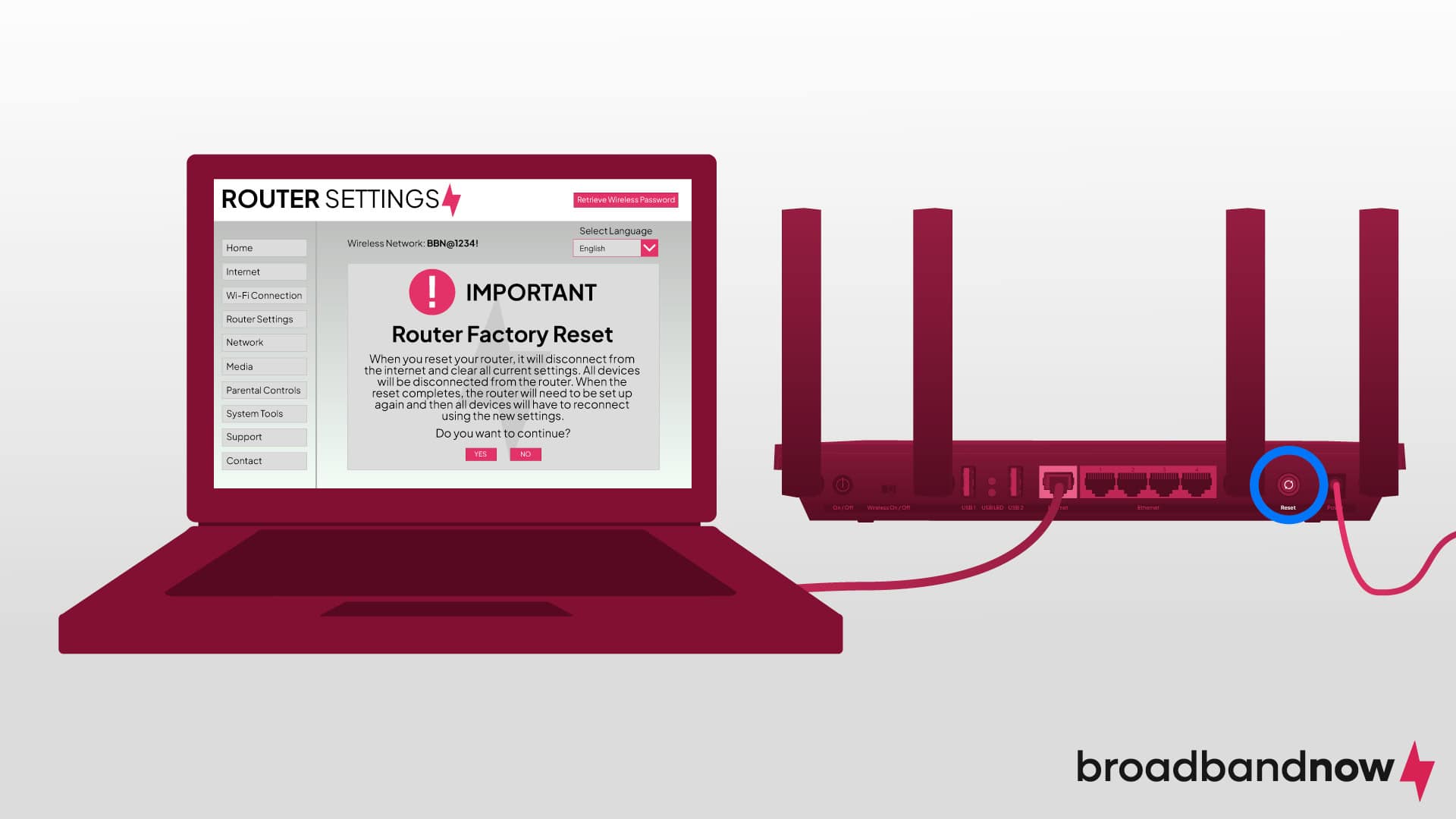
Resetting a router can be necessary to troubleshoot network issues, address security concerns, or prepare the router for resale or donation. The process restores the device to its original factory settings, erasing any custom configurations. In this guide, we’ll outline the steps to reset a router, including locating the reset button, performing the reset process, and reconfiguring the router’s settings afterward to ensure proper network functionality.
Our Video on How to Reset Your Router to Factory Settings
Pressed for time and prefer to watch a video instead? We’ve got you covered! Check out our video on how to reset your router below.
Navigating How to Reset Your Router
- What to Know Before Resetting Your Router
- Why You Need a Factory Reset
- How to Reset Your Router
- How to Restore Router Customization Settings
- Router Reset Troubleshooting Tips
- Frequently Asked Questions About Resetting Your Router
What to Know Before Resetting Your Router
A router reset will restore the device to its original factory settings. All configurations and customizations made since its initial setup will erase permanently. This means a loss of network settings, including Wi-Fi network names and passwords, port forwarding configurations, firewall settings, and any other personalized settings. As a result, it’s essential to make note of all custom configurations beforehand, so you can reconfigure them after the reset.
A router reset is a last resort when troubleshooting complex network issues that other means can’t resolve. Before initiating a reset, explore alternative Wi-Fi troubleshooting methods and ensure you have exhausted all other options. Performing a router reset will temporarily disrupt network connectivity for all devices connected to the router, so it’s advisable to notify everyone in the household in advance to plan for necessary downtime.
Resetting vs. Rebooting Your Router
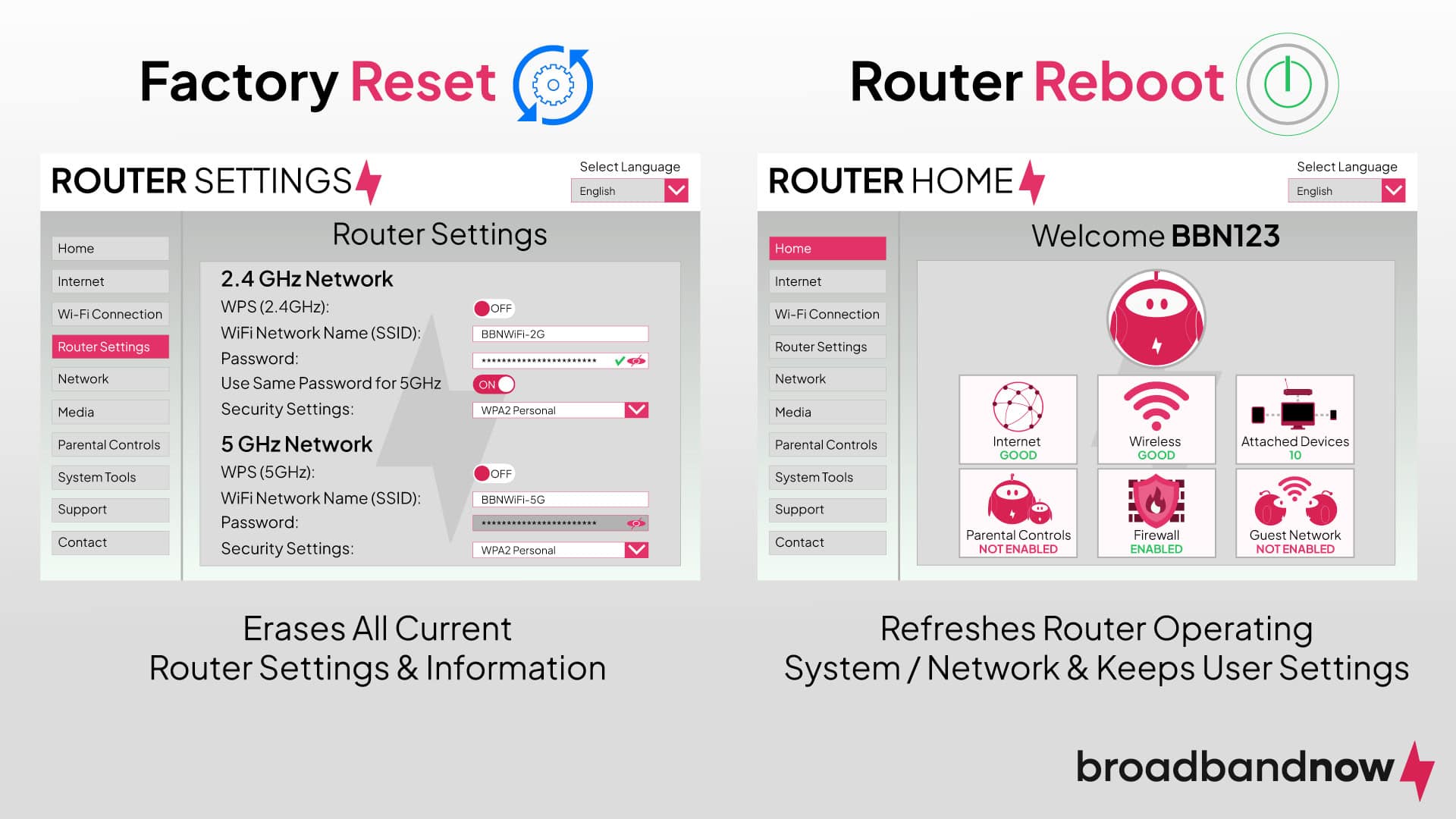
A router reset and a router reboot are distinct processes with different purposes and outcomes. A router reset, often known as a factory reset or hard reset, involves restoring the router to its original factory settings. The reset effectively wipes out all configurations, including network settings, passwords, and any other customized settings. The router returns to a state similar to when it was first unboxed.
A user typically performs a router reset when experiencing complex network issues that remain unresolved through other attempts. When the router experiences severe software glitches or is compromised by malware, returning it to its factory state may be the only viable solution to fix it. You can also reset a router if you’re planning to sell it or give it away, ensuring the complete erasure of all personal settings and information.
A router reboot, or restart, involves simply turning off the router and then turning it back on again. Unlike a reset, a reboot doesn’t erase any configurations or settings but refreshes the router’s operating system and network connections. Users commonly perform reboots when the router experiences minor issues, such as slow internet performance, intermittent connectivity problems, or unresponsiveness. They’re also useful after making configuration changes that require the router to restart to apply the changes or as a preventive maintenance measure to clear temporary memory and refresh the router’s performance.
Why You Need a Router Factory Reset
A few typical situations exist where a factory reset is the best method of resolving issues with your equipment. The most common circumstances include the following:
- You have persistent and unresolved network issues that other troubleshooting methods can’t remedy.
- Your router is impaired by malware or security breaches, and restoring to factory settings is necessary to ensure the complete removal of malicious software.
- You’re preparing to sell or give away the router and want to ensure the removal of all personal configurations and data.
- You have severe software glitches or firmware issues that remain unresolved through software updates or reboots.
- You’ve forgotten administrative passwords or lack access router settings and need to perform a reset to regain control.
- You have significant configuration errors that have rendered the router’s functionality unusable and which manual adjustments cannot rectify.
How to Reset Your Router
Resetting your router is a fairly simple process that may vary slightly depending on your device’s manufacturer. You can consult your router’s manual for information on a device reset. If you no longer have the manual handy, you can usually find a copy online through your router’s manufacturer.
Power On the Router
Your device must remain powered on during the reset. Don’t unplug the device before hitting reset.
Locate the Reset Button
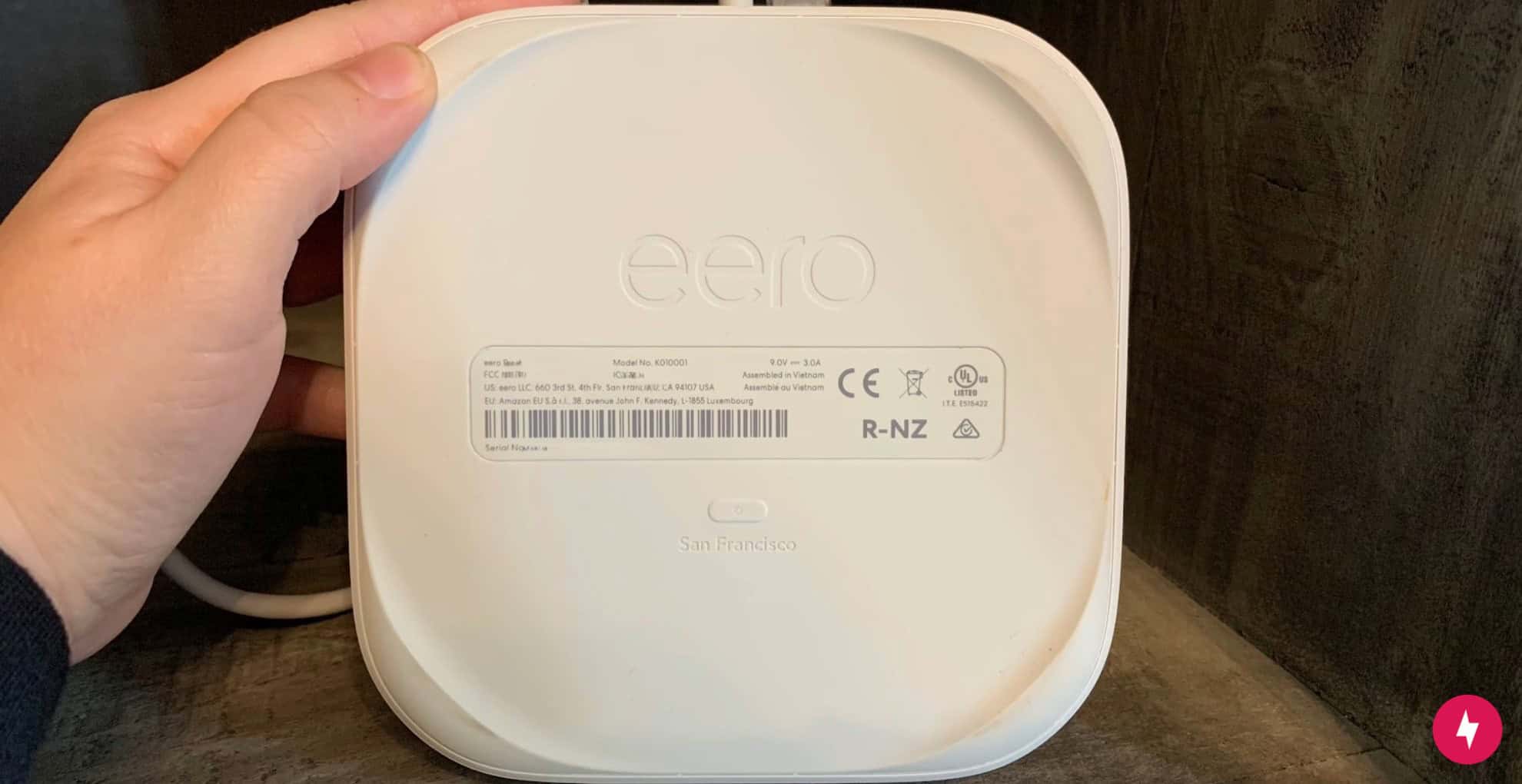
Check your router to find the reset button. Usually, the button is on the back or side of the router and may be accessed with the touch of a finger or by using a tool to reach inside a small narrow opening. The location is generally labeled, either with the word “Reset” or with two arrows in a circular motion.
On my Eero device, the reset symbol denotes the button, while the router provided by my ISP, Spectrum, features both a named label and symbol. Depending on your manufacturer, this will be denoted in varying ways.
Press the Reset Button
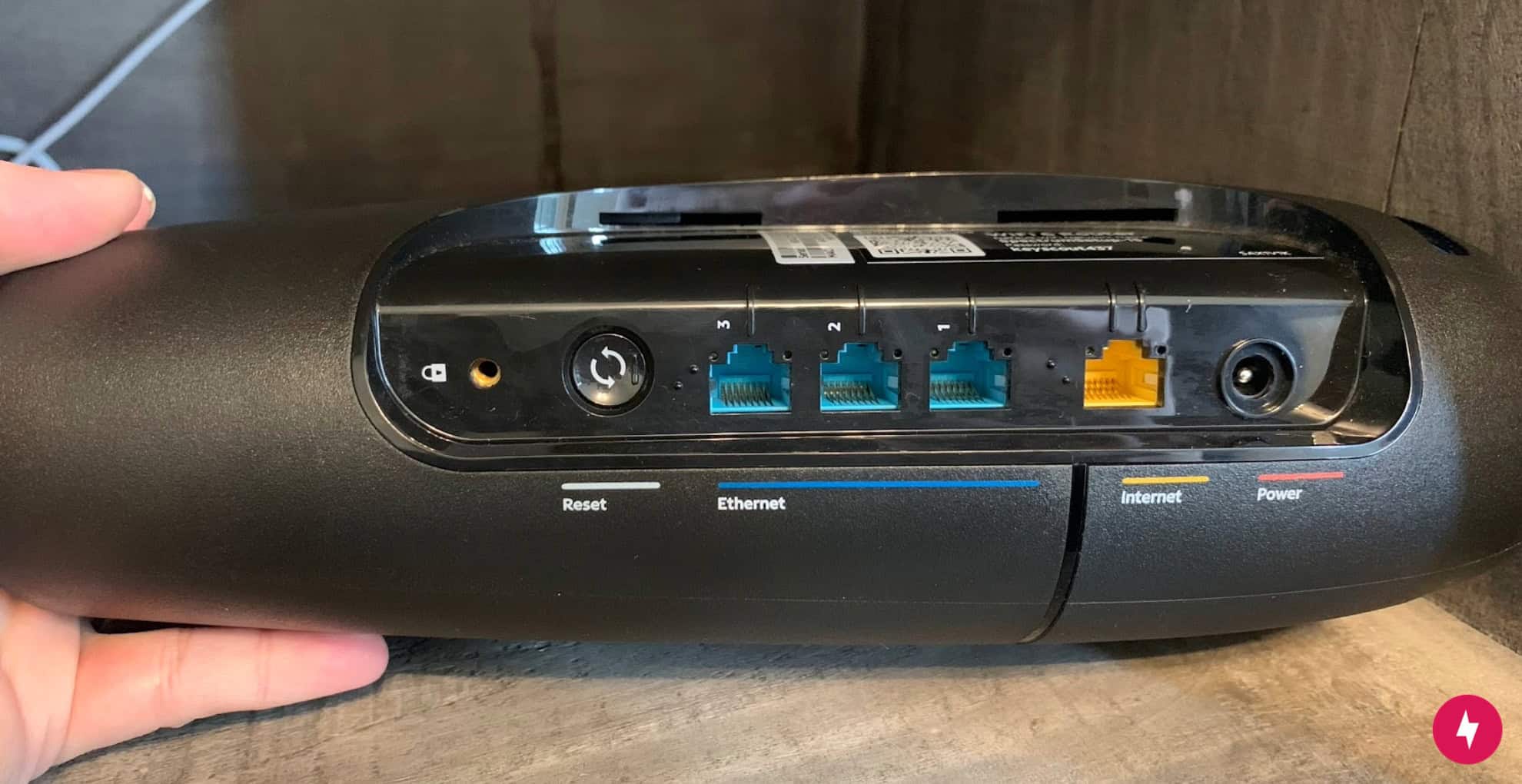
The way you press the reset button will depend on your device. While some have a traditional button you can press with your finger, pressing some reset buttons will require using a paper clip or a pin to access it. No matter which method is required for your specific router, press the reset button and wait for the reset confirmation. Typically, you’ll see a light to indicate the reset. Release when the light indicates to complete the reset.
Test Network Connectivity
Once the device has powered back on, test the network. You’ll need to log in using the default credentials to check that you can maintain a connection without issues.
How to Restore Router Customization Settings
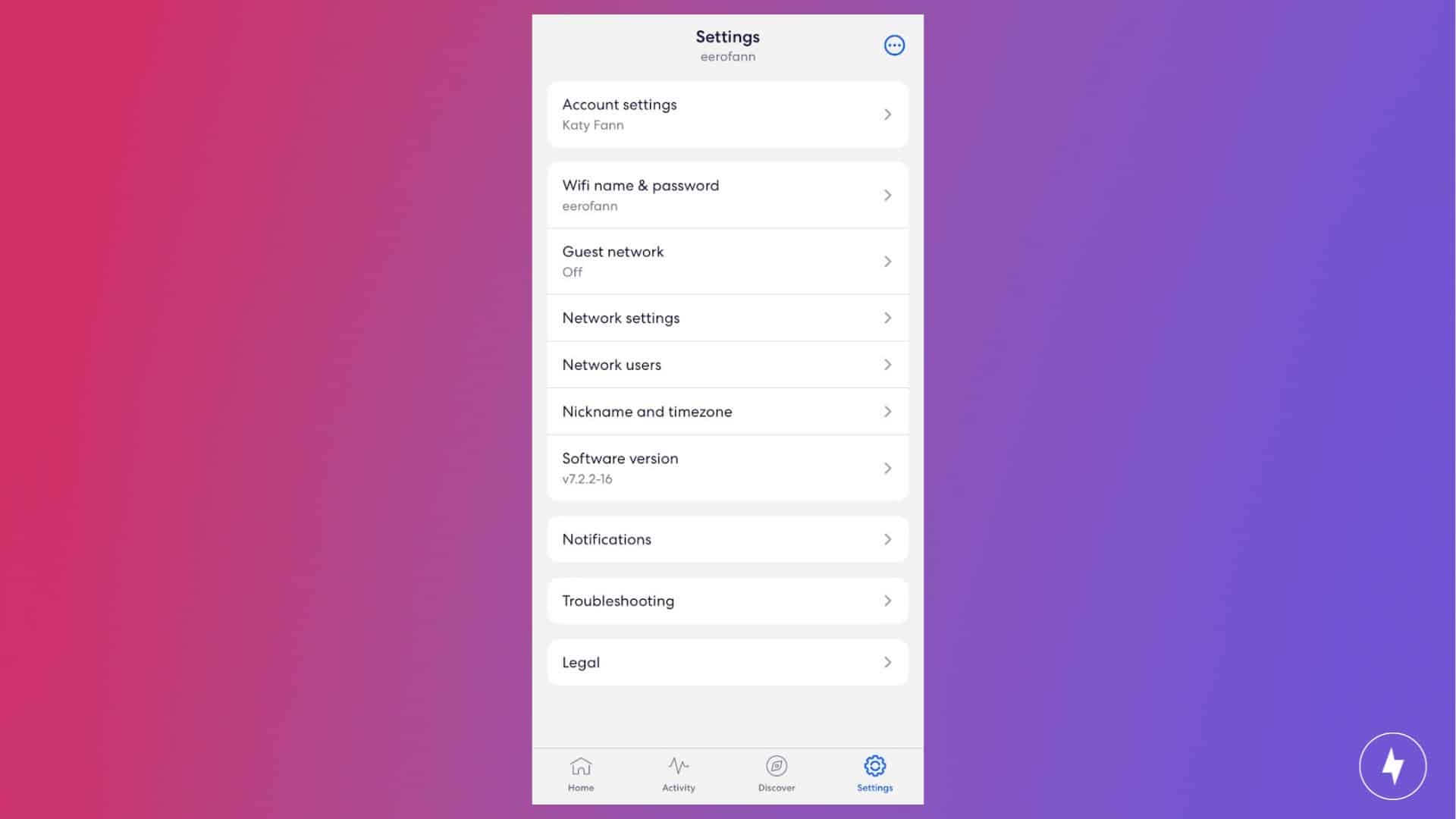
Once you’ve completed the factory reset, you’ll need to reestablish customized settings on your router. Using unique customization settings establishes a secure home network, so you must reconfigure those settings following a reset.
While the steps outlined below feature directions for accessing and updating this information using a computer, you may be able to change these settings in your ISP or router manufacturer’s app. My Eero router, for example, features app-only settings for configuring all router settings.
Change Router Login Credentials

To update your router’s login credentials, you’ll need to locate your router’s IP address. This information is typically located on the device itself.
- Enter your router’s IP address in the search bar of a web browser.
- Log in to the router’s administration interface using the default username and password.
- Navigate to the Administration or System settings section.
- Locate the option to change the router’s login credentials and follow the prompts to enter a new username and password.
Change Wi-Fi Login Credentials
Resetting your router returns your Wi-Fi login credentials to the default setting, which you received when you initially purchased or were supplied with your router. To maintain safety for your home network, change your Wi-Fi name and password.
- Log in to your router’s administration interface.
- Navigate to the Wi-Fi section.
- Change your Username and Password.
Configure Wi-Fi Network Settings
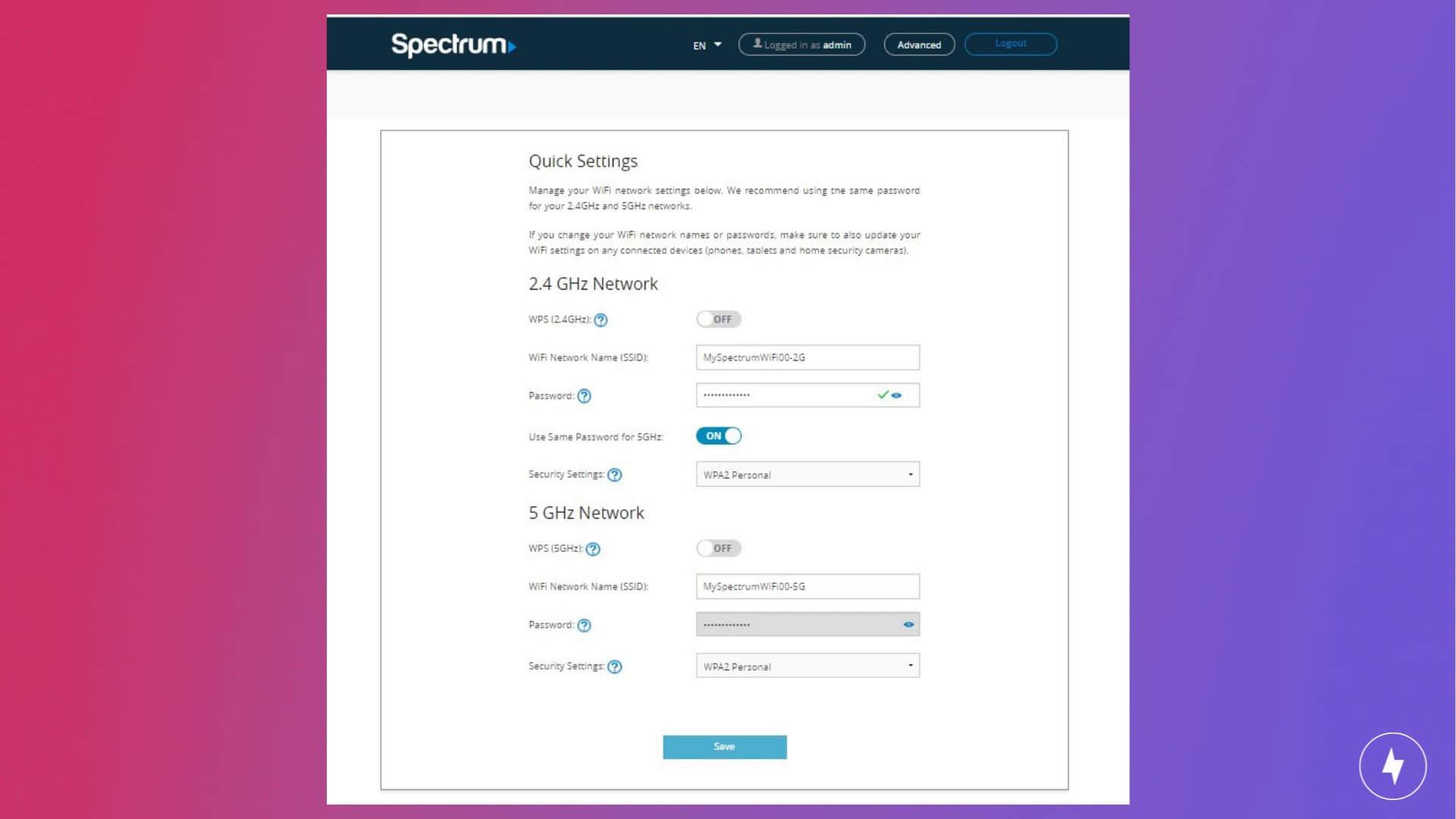
Once you’re inside the Wi-Fi settings on your router, you can configure your preferred settings. Some examples include:
- Enabling encryption protocols such as WPA2 or WPA3 for enhanced security.
- Switching Wi-Fi frequencies between 2.4 GHz and 5 GHz.
- Resetting the bandwidth mode for 2.4 GHz or 5 GHz networks.
Update Firmware
Typically, firmware remains unchanged following a factory reset, but it’s still a good idea to verify that you’re using the latest upgrade for your device’s safety and efficiency.
- Access the router’s administration interface using the default login credentials.
- Navigate to the firmware update section, usually found under Administration or Advanced Settings.
- Check for available firmware updates and follow the on-screen instructions to install the latest version.
Router Reset Troubleshooting Tips
After you perform a factory reset and reconfigure the router, you may face some issues that require troubleshooting.
- Connectivity problems: If devices won’t connect to the Wi-Fi network after reconfiguration, ensure the correct entry of the network name (SSID) and password on the devices. Verify that the router’s Wi-Fi settings match the configured values and that the wireless network is broadcasting properly. Troubleshoot any signal interference or range issues by adjusting the router’s channel settings or repositioning the device.
- Port forwarding and firewall issues: After reconfiguring the router, verify the correct application of any port forwarding rules and firewall settings. Ensure that the necessary ports are open and forwarded to the appropriate devices on the network. Double-check firewall settings to prevent unintended blocking of network traffic.
- Router performance degradation: If the router experiences performance degradation after reconfiguration, consider factors such as the number of connected devices, network traffic, and router hardware capabilities. Optimize router performance by updating firmware to the latest version, limiting bandwidth-intensive applications, and implementing Quality of Service (QoS) settings to prioritize network traffic.
- Configuration backup: After reconfiguration, back up the router’s configuration settings to avoid future issues. The router’s back up and restore functionality allows you to save configuration files, allowing for quick restoration in the event of configuration loss.
Frequently Asked Questions About Resetting Your Router
Does unplugging a router reset it?
Simply unplugging a router doesn’t reset it to factory settings. Unplugging a router is a method of rebooting or restarting it. When a router is unplugged from its power source, it simply turns off and ceases its operations. This action does not erase any configurations or settings stored in the router’s memory.
Is it safe to reset my Wi-Fi router?
Resetting a Wi-Fi router is safe and often necessary for troubleshooting some network issues. To avoid any issues during and following a reset, back up any important configurations and ensure that you have access to the default login credentials. This is important, as the router will return to its original factory settings, erasing all configurations, including network names, passwords, and custom settings.
How often should I reset my router?
Routers typically don’t need to be reset regularly. While a reboot is recommended every few months, a reset should only be executed when other troubleshooting processes have proven unsuccessful.
How long does a router take to reset?
In most cases, a router reset typically takes one to five minutes to complete. However, the time it takes for a router to reset can vary depending on the model, its processing power, and the complexity of its firmware. During this time, the router will power off, restart, and then initialize its firmware and network settings. Factors such as the number of devices connected to the router and the complexity of its configuration can also impact the reset time.